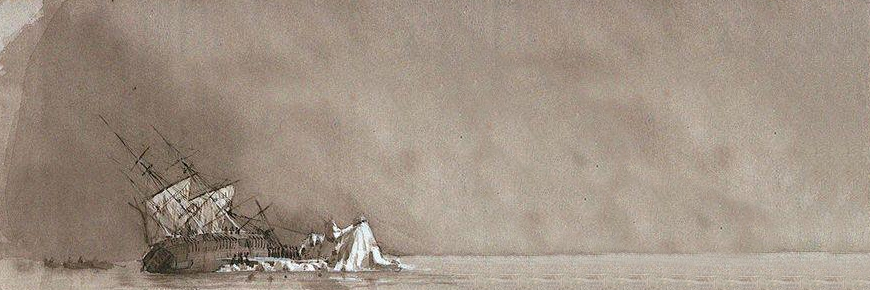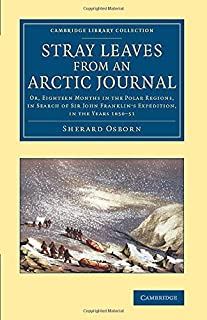
Inspired by the BBC’s gripping fictionalised account of Sir John Franklin’s tragic 1845 expedition to the Arctic, Mike Guilfoyle, vice-chair of the Friends of Brockley and Ladywell Cemeteries, uncovers a link to later searches for the lost vessels
HMS Erebus and HMS Terror were lost during Sir John Franklin’s tragic 1845 expedition to chart Canada’s Northwest Passage. The lost vessels were sought for more than 160 years before they were finally located in 2014 and 2016.
It was whilst watching on TV the gripping fictionalised account of the mysterious disappearance of the 1845 Franklin expedition in it’s attempts to traverse the last unnavigated parts of the Northwest Passage in the Canadian Arctic – The Terror’ https://www.bbc.co.uk/programmes/p0954ks6.
That brought to mind two significant historic graves in Ladywell cemetery linked to later searches for the whereabouts of HMS Erebus and HMS Terror (both ships had become icebound and their crews disappeared in desperate efforts to reach the Canadian mainland).
The expedition was lost without a trace, and all 129 men died in what is arguably the worst disaster in Britain’s history of polar exploration.
The part submerged headstone on the grave of Helen Harriet Gordon Osborn ( 1824-1906)* lies close to the entrance to Ladywell cemetery and an inscription notes that she was the wife of Vice Admiral Sherard Osborn CB FRS (1822-1875). His final resting place is on a slightly grander scale in Highgate cemetery.

The couple, who married in 1852 had two daughters , intriguingly in 1856 his diary contains the following entry ‘he got rid of a bad wife by her absconding’. There is no record of the couple divorcing.
Rear Admiral (appointed 1873) Sherard Osborn’s remarkable naval career embraced piracy suppression in the East Indies, First and Second China/Opium Wars.
But notably he participated in the 1850/51 search for Sir John Franklin’s missing Northwest Passage expedition led by Captain Austin in which he was the Commander of HMS Pioneer.
He also saw action in the Crimean War for which he was decorated and took part in the abortive 1862 Lay-Osborn flotilla to China.
He left a number of journals detailing his many expeditions and was a pioneer in the development of steam powered ships.

A short distance from the Osborn grave in Ladywell cemetery is the angular headstone of John Fitzgerald Charlton MD RN (c1812-1874) who was a staff surgeon of the Royal Marine Artillery.
In I85I, he volunteered for service with the expedition in search of Sir John Franklin’s expedition and travelled to the Arctic aboard the supply ship, HMS Phoenix, for which service he obtained the Arctic medal.
He died at his residence in Sydenham in 1874. He had a very illustrious career in the Royal Navy and his obituary appeared in the British Medical Journal:https://www.ncbi.nlm.nih.gov/pmc/articles/PMC2294899/pdf/brmedj05158-0027a.pdf
*Helen Osborn was living at Cressingham road, Lewisham when she died aged 82 years in 1906. Her father John Hinxman made his fortune as a Navy Agent during and after the Napoleonic Wars. He died as the result of a rail accident on 30 August 1847 and his art collection, included 489 works by the artist John Scarlett Davis (d.1845).
One of her brothers, Charles Lawrence Walpole Hinxman, was a close friend of Captain Louis Edward Nolan, now remembered as the man who sent The Light Brigade to its doom at Balaclava in 1854 during the Crimean War.
Footnote: Many readers will no doubt be familiar with walking past the granite obelisk to the French Explorer Lieutenant Joseph Rene Bellot (1826-1852) located on the riverside footpath close to the Cutty Sark, Greenwich. He sailed aboard HMS Phoenix as part of the above expedition from Greenwich in 1851 and tragically perished whilst attempting to rescue crew members adrift on an ice flow.
